For this Germany Day here is probably the most important European submarine class of the cold war, by far its most successful export. Indeed, with 68 boats so far, in five variants (more on order) Howaldtswerke-Deutsche Werft managed to keep this 1970s design relevant for decades. The last ones are still built in the 2020s, after half a century… The Type 209 diesel-electric submarines were nevertheless never integrated into the Bundesmarine, and no new submarine was built before the Type 212A, of the early 2000s. The Type 209 was at its core a further development of the Type 206, with a range of modular features that were especially made for export. So in this unusual post we will see all these export classes and their differences, as well as the basic design and each variants, including licenced ones.

Brazilian Timbiria (S32) off Rio
Development
Replacing 1950-60s submarines
In 1969 i was obvious that World War II-era submarines, moslty aging United States GUPPY conversion, and former British submarines were about to end their service life, all these navies equipped so far would need replacement. The USN’s latest submarines were so high-end products they were out of reach of most of the world at the time, and only the USSR presented itself as a viable replacement, inundanting this market in its own sphere of influence and beyond in the developing world with its inxpensive Whiskey and later Foxtrot types. In contrast there were few western submarine designs available for export.
The exceptions came from traditional naval powers such as Britain and France with respectively, the Oberons and Daphné, whereas they too embarked on the more complex and high-end SSNs and SSBNs. Howardwerke, instrumental behind previous designs, convinced the German Ministry of Defense to endorse a new type of submarine for this endavour, soon named the “Type 209” as an ideal solution providing the combination of size, performance, relative ease of operation for small or inexperienced navies, at reasonable price, greater automation and lower maintenance bar. The second argument oustide the benefit for the German economy was its own set of competences.
Preserving Knowhow
The other core idea behind the Type 209 was indeed quite simple: In 1969 already as the first Type 206 was laid down, plans showed that with the 18 boats planned for the Bundesmarine (plus all the 1960s Type 205 already in service), the needs would be covered, with room to spare, and there was no replacement needed before at least 1995. It was planned 25 years of service for the Type 206 with upgrades. The last boats were planned to be delivered in early 1975. The Bundestag would be hard-pressed indeed to replace these recent boats with new ones in the 1980s.
After this, Howaldtswerke-Deutsche Werft (and incidentally Nordseewerke) would be without work apart drydock maintenance and modernization of these boats. So, at least twenty years without new order, and previous knowhow lost in the meantime for the complex construction of a pressure hull, as well as no work for the whole chain of suppliers developed in two decades behind across Germany. The obvious solution was export, to maintain this complex chain of skills and competences, and continue to finance and maintain R&D and improve the lineage. This became the main motivation to maintain a just painfully recreated submarine industry.

The three Argentinian Type 209 in formation
This was only confirmed by the interest expressed already by some navies earlier. So far Denmark benefited from modified Type 205s in 1968, so it became evident that the Type 206, if correctly marketed, could become an export success. However there were two imperatives to reach that goal: Create a somewhat downgraded variant of the Type 206 to keep the Bundesmarine its advantage and further tailor the Type 206 for the need of potential customers, so that meant emphasis on extreme modularity and ease of transformation and evolution, thus to reduce specification tailoring costs and thus, make the end cost even more attractive. All this and more led Howaldtswerke to create from 1970 onwards a brand new submarine, derived from the Type 206 for the great lines, but really tailored for export. Many navies by security wants a submarine type to be operated by the builder at that time, but the Type 209 was marketed as a version of the Type 206.
A concept applied to Frigates: The MEKO story
It should be noted that the same philosophy was applied to the construction of the Bremen class Frigates. In 1980 Blohm & Voss shipyards for the same reason started working on export frigates, following the example of Howaldswerke, created the concept of “Mehrzweck-Kombination” (multi-purpose-combination) based on modularity of armament, electronics and other equipment, to better match customers requirements and ease both overall cost and maintenance cost. This started with the MEKO 360 (1981), MEKO 140 (1985), MEKO 200 (1987) and went on for the 1990s and 2000s preserving the same precious skills set.
Design of the class
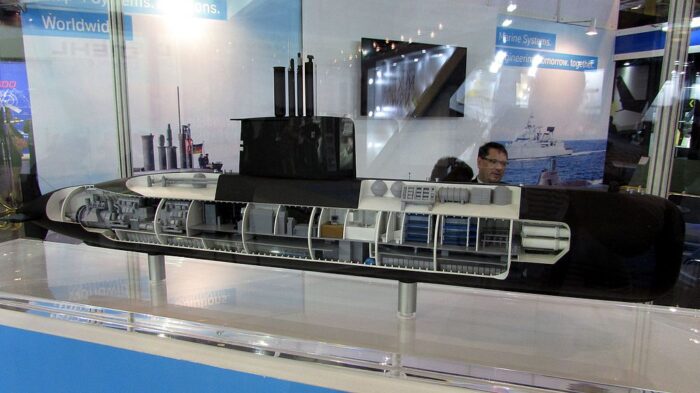
Internals of a Type 209-1400mod (presumably) in 2016 at Asian Defence and Security (ADAS) Trade Show in Manila.
As for the boats themselves, they were designed following the Type 206 core features, that of a coastal, small and potentially inexpensive submarines, answering a market niche below the Oberon class and Foxtrot class, considered too large, heavy and unsuitable for simple coastal protection for smaller states. The Class 209 was indeed designed on behalf of the German Federal Ministry of Defense, and kept coastal protection as the core design frame, conceinve initially in the shallow Baltic and North Seas, perfect for many green waters navies, and building from the gained experience with the Type 206. The Class 209 was to combine the advantages of light submarines with quiet electric propulsion and a powerful torpedo armament to make these attractive.
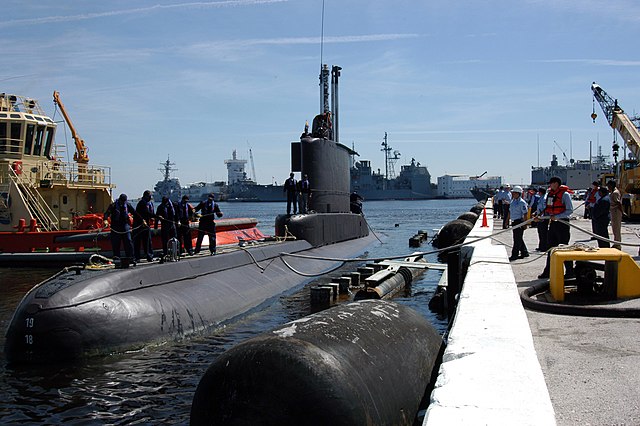
However the Type 206 massive marketing also had an impact, modifiying the accepted export policies of Germany at the time. Indeed during the Falklands War, the Argentine San Luis (Type 209/1200) fired eight torpedoes, four of which being wire-guided German SST-4 torpedoes from 7,000 meters at the British aircraft carrier Invincible and its escorts. Targeting errors meant no hits achieved, but this also draw some relief at Berlin, as it would have put the Government at odds with British presence in many bases in West Germany (BAOR), so well embedded on its own defensive network (Something France and its exocets had no problem with). From then on, the Bundestag constrained the MoD to restrict the sale of its hardware, whatever its type, to approved countries only. Argentina in the 1980s was indeed not a democratic model of virtue, so Chile and others.
Hull and general design

The Type 209 was designed by Ingenieurkontor Lübeck (IKL), based on the Type 206, still tailored for coastal areas and targeting surface ships, submarines and supply vessels. They were not made to gather intel for example. They were also well protected against sea mines (the plague of the baltic) and their detection by magnetometer sensors, but also kept their trademark non-magnetizable submarine steel for construction.
Their size and displacement would grow and diverge by sub-type, the largest being the Type 209/1500 at 64.4 m (211 ft 3 in) whereas the 1200 was 55.9 m (183 ft 5 in) long,
for a still reasonable draft between 5.5 and 6.2 m. The smallest range were the Type 209-1100 at 54.1 m long and 6.2 m wide for 5.9 m draft. Tonnages went from 1207t for the 1100 to 1810t for the 1500, submerged displacement which was still light.
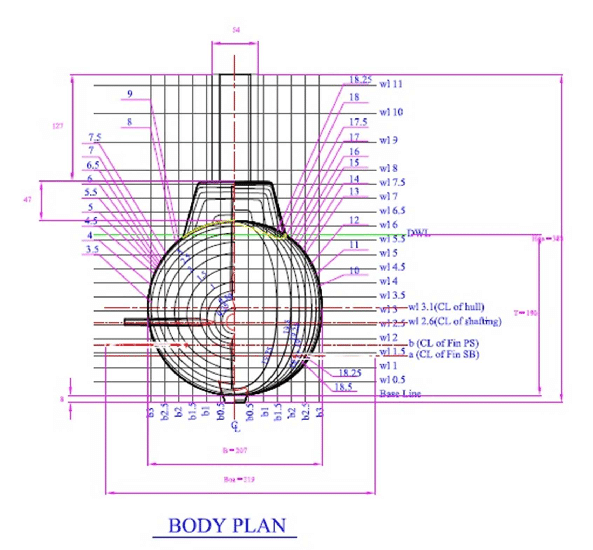
Modifications were made during these decades, ending with a wide variation even between sub-class, the most modified being the 1400.
Apart the tonnage, the 209/1200 boat from 1972 differs considerably from those from 2001. The external shape varied the most.
First type: The 209-1100 and early -1200 are Type 205A (2nd construction batch), enlarged and with a modified rudder system, stepped CT fairing, and an upper deck with a narrow walkway on the forecastle ending aft of the sail fairing.
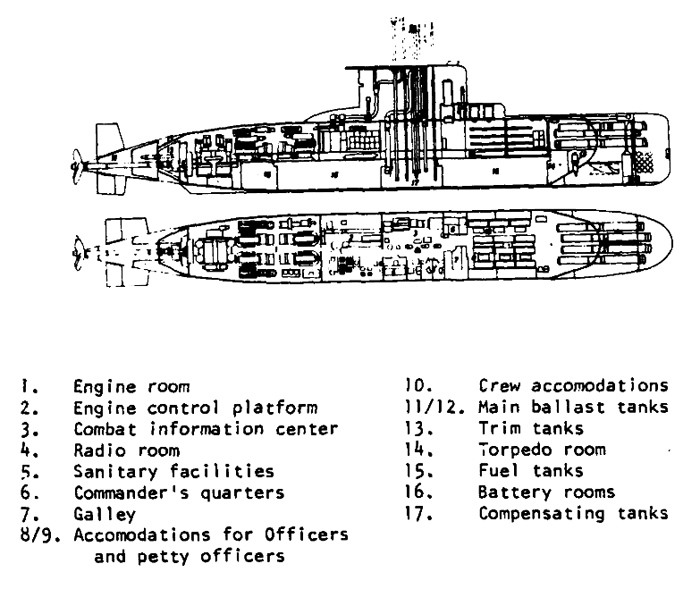
Second evolution: Later 1200, which concerned the Batiray and Poseidon classes and Pijao class and most 1300 boats (Sabalo, Shyri, Cakra classes) had a conspicuous sonar dome on the bow as on the Type 206.
Third evolution: Last of the 1300 variant, the Chilean Thomson class, and licenced Chang Bogo class, and early Brazilian 1400 of the Tupi class as the Indian 1500 variant. They all had the same, enlarged and streamlined, upwardly curved upper deck extending behind the sail and included the sonar dome in the bow. The front and rear edges of the stepless CT were vertical.
Fourth evolution: Type 209 of the late 1400 variant, the Turkish Preveze class and Gür class, Tikuna and Heroine/Manthatisi class has an almost smooth upper deck extends far aft with setpless front and rear edges and even more streamlined sail, bevelled. The diesel exhaust outlets rear of the sail are like the Type 205 3rd construction batch.
Powerplant
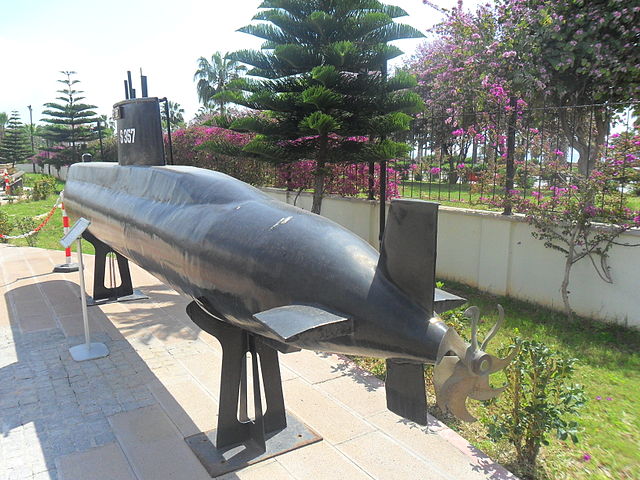
TCG Gür’s aft section replica showing the late hull type and 7-bladed hooked propeller. The class is made in Turkey and reprsent the pinnacle of the Type 209.
The powerplant remained essentially the same for all sub-types, 1100, 1200, 1300, and 1400. The 1500 were “their own thing”. The names referred loosely to their displacement range. The basic layout consisted in a typical diesel-electric drive consisting of four MTU Friedrichshafen diesels and four AEG generators, mounted directly on the diesel engines for compacity, as well as a DC electric motor. To served them there were four electric batteries with 120 cells each. They were located forward and behind the main Control post, making up 25 percent of the total displacement. This enable to increazse even more underwater range and performances compared to the Type 206. Single propeller again, driven via a shaft directly by the electric motor for greater flexibility in operations, consisting of two engines in one housing. The diesel generator units only charged the batteries. There was no mechanical connection between the propeller shaft and diesels. However the oatest Tyoe 209-1500 were marketed with fuel cell drive. From 1972 to 2020 indeed, technology advanced considerably and ensured Howaldswerke (HDW), now part of ThyssenKrupp Marine Systems (TKMS) still had innovations to present at each exhibitions of its best seller.
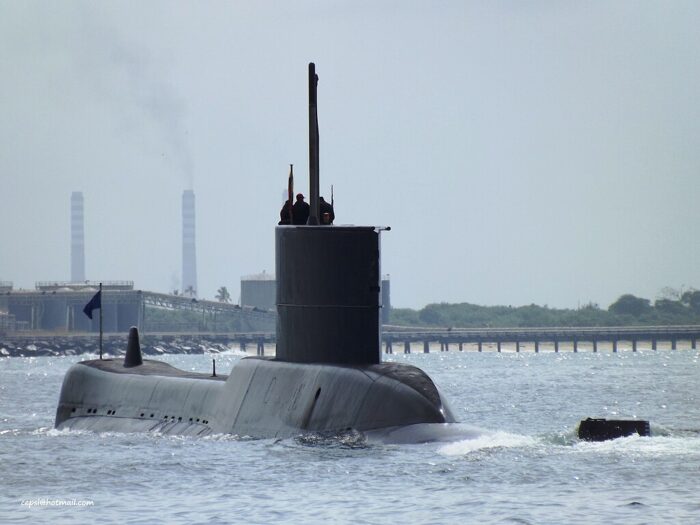
Performances were constant across the board despite the increased size, 11 knots (20 km/h) surfaced, 21.5 to 22 knots submerged, 11,000 nmi (20,000 km) range at 10 knots (20 km/h) surfaced, 8,000 nmi (15,000 km) at 10 knots (20 km/h) under snorkel and 400 nmi (700 km) at 4 knots (7 km/h) submerged. This was quite an increase compared to the Type 206, capable of 10/17 knots and a range of 4500 nm surfaced, 228 submerged at 4 knots, so baslically double. Being larger, these type 209 also had more storage and thus, and endurance of 50 days for a crew between 30 and 33 versus 22.
Underwater speed was increased but also maximum depth, advertised at 500 m whereas the Type 206 was limited to c250m, so double there too. It should be precised that since WW2, the real practical depth of a submarine remained confidential and classified for obvious security reasons.
Armament
The Type 209 presented eight 533 mm bow torpedo tubes as standard for a total of 14 torpedoes, versus only eight torpedoes on the type 206, so here again almost double. The array of torpedo presented was potentially quite large as all standard 530 mm or 21 inches models produced anywhere at the time could potentially fit. However the company pushed to sell German torpedoes.
Chief of which was probably the SUT, a derivative of the SST-4 further developed as the DM2A1 Seeal Heavyweight torpedo.
Models sold were the following:
DM2 Seehecht (1985)
DM2 Seehecht A-3 (Norwegian Ula class, Type 210 subs) and A-4 for the Type 212 B submarines. Developed for the Type 206A in 1985.
The DM2 A-4 export version for non-NATO countries was traded as the “Seahake” for the Type 209-1500 and Type 214.
The Seehecht entered service by 1987, weighting 3,020 lbs. (1,370 kg) for 259.8 in. (6.600 m) overall, carrying a larger 573 lbs. (260 kg) payload to 22,000 yards (20,000 m) at 35 knots (improved on A-4) to 55,000 yards (50,000 m) at 50 knots, still powered by Silver-zinc battery on contra-rotating skew-back props.
The DM2A4 was the last developed, in 2004, widely exported. Operators are the same using the Type 209 in its various sub-types and the new Type 210/210.
⚙ specifications DM2A1 Seeaal |
|
| Weight | 1.370 kg |
| Dimensions | 6.08 m and 6.55 m with wire reel x 533 mm |
| Propulsion | Electric motor, Silver-zinc batteries |
| Range/speed setting | 35 kts(12-13 km), 23(13-20 km) and 18 knots (28 km). |
| Warhead | 250 kg hexagon/RDT/aluminum, Impact fuse, magnetic proximity fuse. |
| Max depth | Runs near the surface |
| Guidance | Wire guidance +Passive acoustic homing |
SST-3 Seeal (1967)
Already seen on the Type 206 as its main torpedo type. This Wire-guided anti-ship torpedo probably was produced by IPTN of Indonesia since 1978 for its own Type 209s. It entered servce in 1972 just as the first ordered Type 209 were launched. The SST-4 Seal (1975) in service in 1980 replaced it but was apparently not exported. SST means surface targets only.
The SST-4 is nearly identical to the SST-3 with the addition of passive homing. As said above, the SST-4 was employed by the Argentine Navy during the Falklands War with poor results, as a SUT version. It was linked with problem in the seekers’s assembly. Target Ships were sank with it in 2018 and 2020 with sucess otherwise.
⚙ specifications DM3 Seeal |
|
| Weight | 3,116 lbs. (1,414 kg) |
| Dimensions | 239 in. (6.080 m) x 533 mm |
| Propulsion | Electric motor, Silver-zinc batteries |
| Range/speed setting | 35 kts(12-13 km), 23(13-20 km) and 18 knots (28 km). |
| Warhead | 260 kg (573 Ibs) hexagon/RDT/aluminum, Impact fuse, magnetic proximity fuse. |
| Guidance | Passive acoustic homing |
SUT (1967)
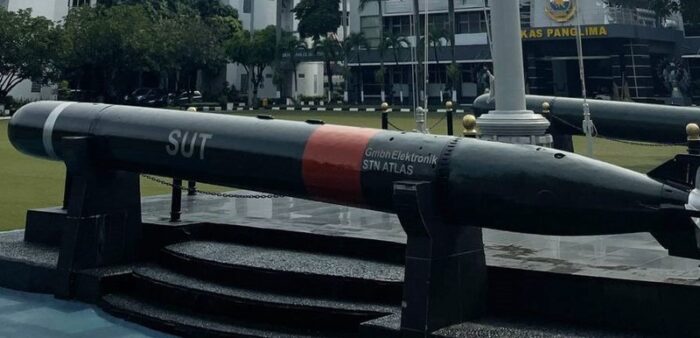
An export version of the SST-3 Seal by STN Atlas. The acronym in English means “Surface and Underwater Target” and it was THE export Wire-guided anti-ship torpedo marketed alongside the Type 209. It has passive homing capability, generally fired back over the stern with the tail facing forward. Indonesia produced license copies, many are probably unlicenced as well after second hand deals.
The SUT existed in two variants, one based on the SST-3 (1972) and one absed on the SST-4 (1980). Specs were the same. This wire guided torpedo used passive acoustic homing for the final run, with initial wire guidance was perfect for the shallow waters of the baltic, in which sonar ranges were reduced due to surface and bottom echoes. It was good also for standoff range. The 250 kg warhead was equivalent to 450 kg TNT, using a magnetic proximity fuse to detonate underkeel and optional impact fuse in very shallow waters. The DM2 has three speed selection. It was never exported. SST-4 and SUT (exported) however incorporated many features of the DM2.
In addition to Indonesia, it was also purchased by Chile for its Scorpene class, India on its Kalvari class, later upgraded by OEM Atlas Elektronik in 2013.
For the Taiwanese built models, The SUT was originally procured along with the two Hai Lung-class but procured from the Indonesian production line. There was an trial incident with loss of control on September 4, 2003 leading to an investigation. It was replaced by the Mk 48 torpedo.
⚙ specifications SUT (SST-4) |
|
| Weight | 1.414 kg (3,116 Ibs) |
| Dimensions | 6.08 m (239 inches) x 533 mm (21 inches) |
| Propulsion | Electric motor, Silver-zinc batteries |
| Range/speed setting | 35 kts for 12 km), 23 kts for 28 km. |
| Warhead | 260 kg (573 Ibs) hexagon/RDT/aluminum, Impact fuse, magnetic proximity fuse. |
| Guidance | Wire guidance +Passive acoustic homing |
UGM-84 Harpoon
The Greek, South Korean and Turkish submarines were tailored to be equipped with UGM-84 Harpoon missiles fired from the tubes.
Mines
Mines: Up to 16 without the torpedo load and 24 in two external containers, 12 each, keeping the torpedo load intact, but with the latter replaced by the mines, up to mines 40 total, which was not negligible. They could be magnetic with a delayed setting in order for the minelayer sub to be far away when activated.
Korean and Egyptian submarines can carry 28 sea mines internally in place of torpedoes, the Indian submarines can carry 24 sea mines externally.
Sensors
The full suite was customer dependent and varied considerably among customers. All Class 209 submarines differ in terms of their fire control systems options as well according to the wishes of the respective clients.
GLAVKOS class (1971-1972) of the 1100 type, first customer: Calypso radar, CSU-3-4 sonar suite (AN526, AN406A9, DUUX-2), AR-700-S5 ECM
More to come.
Variants
Type 209-1100
The 1100 was the first variant sold, to first to Greece in 1969, with four built of the Glavkos class, commissioned 1971-72. They were not the only ones of the 1100 type ever built or exported, with Peru orderding two Islay class, delivered in 1975. They were at the time, back in 1970, well adapted for the budget of the Hellenic Navy and its particuliar waters, restricted but deep at the same time. This move trigerred the same from Turkey as both countries and arch-rivals operate the same, obsolescent GUPPY fleet snorkels, far too large for their use. They are now decommissoned since 2011.

⚙ Type 209-1100 specifications |
|
| Displacement | 1,207t |
| Dimensions | 54.1 × 6.2 × 5.9 m |
| Propulsion | 1 shaft 4 diesels, 2 generators 5,000 shp, 4 x 120-cell batteries |
| Speed | 11 knots (20 km/h) surfaced, 21.5 knots submerged |
| Range | 11,000 nmi/10 knots surfaced, 400 nmi/4 knots submerged |
| Armament | 8x 533 mm Torpedo Tubes, 14 torpedoes, see notes. |
| Max Depth | More than 500 m |
| Sensors | Customer dependent |
| Crew | 31 |
Type 209-1200
Indentified as the Salta class, two boats for the Argentine Navy ordered in 1969 and commissioned in 1974. Due to treaty restrictions on WEU’s 450 tons limit, only individual sections could be built in the Kiel Howaldtswerke, then assembled under supervision at the Tandanor naval shipyard, Buenos Aires.
Then the Pijao class were commissioned in 1975 (2), the Poseidon class (4 boats) in 1979, the Peruvian Angamos class in 1980 (4). It was licenced for a full produciton in South Korea as the Jang Bogo class, nine boats commissioned in 1993-2001. Turkey assembled at Istambul its six Atilay class in 1976-89.
⚙ Type 209-1200 specifications |
|
| Displacement | 1,285t |
| Dimensions | 55.9 × 6.3 × 5.5 m |
| Crew | 33 |
Type 209-1300
These larger models were purchased by Ecuador as the Shyri class (commissioned in 1977) and at the same time the two Sabalo class (1976), followed by two to Indonesia, the Cakra class (1981).
⚙ Type 209-1300 specifications |
|
| Displacement | 1390t |
| Dimensions | 59.5 × 6.2 × 5.5 m |
| Crew | 33 |
Type 209-1400
The absolute best seller in the Type 209. It seems HDW found the right balance with this one. Similar to the rest apart a slightly better underwater speed despite its larger dimensions and same powerplant. The diesels were improved but power figures remained essentially the same. They were the very last also in the range. The initial Type 209-1400 were later known as the 1400L, tailorted for their first custimer, Chile in 1984 with two boats. They motivated a replica by Brazil as the Tupi class in 1989. The boats were assembled in Brazil, with five total commissioned 1996-99 and a single one in 2005 as the 1400mod.
Other basic 1400 were purchased by Indonesia (the three Nagapasa) as late as 2017.
In 1994 Turkey took delivery of its first replacement for its 1200 type boats, assembled then built entirely in Turkey as the 1400T1 and later T2 types, or Preveze and Gür class, 8 boats, total the first in 1994-98 and second serie in 2003-2007.
Other 1400 mod types were purchased South Africa in 2005 (3), and Egypt (4 in 2017-21).
⚙ Type 209-1400 specifications |
|
| Displacement | 1,586t |
| Dimensions | 61.2 × 6.25 × 5.5 m |
| Speed | 11 kts/22 knots |
| Crew | 30 |
The Type 209-1500 (1986)
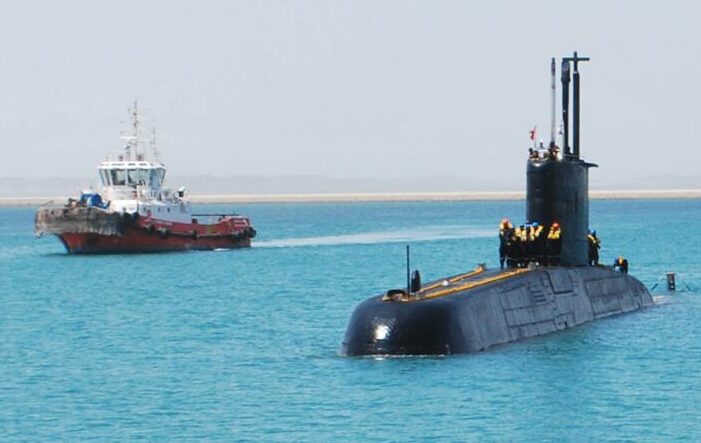
This type was developed specifically for Indian needs, but became the ultimate evolution of the type. This was for the Shishuma class (see later) with four built, two in 1986 and two in 1992-94. They remains the only ones. They were unusual in what they were built for the first two at HDW but the rest under tech transfer at Mazagon dock in Mumbai.
⚙ Type 209-1500 specifications |
|
| Displacement | 1,810t submerged |
| Dimensions | 64.4 × 6.5 × 6.2 m |
| Propulsion | Same arrangement but 6,100 shp (4,500 kW), 4x 132 cell batteries |
| Speed | 11.5 surfaced, 22.5 knots submerged |
| Crew | 36 |
Exports:
Countries operating the Type 209 included the following; Argentina, Brazil, Chile, Colombia, Ecuador, Egypt, Greece, India, Indonesia, Israel, Peru, South Africa, South Korea, Turkey and Venezuela. Iran ordered six Type 209 submarines early on under the Shah, but it was cancelled by Ayatolla Khomeini in 1979 after the Revolution.
As of early 2024, most of the Type 209 built are still in commission. Argentina’s ARA San Luis was stricken in 1997 after an incomplete overhaul and the Greek Glavkos was decommissioned in 2011 whereas the Turkish TCG Saldıray was decommissioned in 2014, TCG Atılay in 2016. Indonesia’s own KRI Nanggala sank in 2021.
Colombia commissioned two Type 209/1200s (Pijao class) in 1975.
Peru commissioned two Type 209/1100s (Islay class) in 1975 and four Type 209/1200s (Angamos class) between 1980 and 1983.
The largest operator of the Type 209 is the Turkish Navy which commissioned six Type 209/1200s (Atılay class) between 1976 and 1989, four Type 209/1400s (Preveze class) between 1994 and 1999, and four more Type 209/1400s (Gür class) between 2003 and 2007. Turkey is also the largest operator of German-designed submarines in the world.
Venezuela commissioned two Type 209/1300s (Sabalo class) between 1976 and 1977.
Ecuador commissioned two Type 209/1700s (Shyri class) between 1977 and 1978.
Chile commissioned two Type 209/1400s (Thomson class) in 1984.
Indonesia commissioned two Type 209/1300s (Cakra class) in 1981 and three Type 209/1400s (Nagapasa class) between 2017 and 2021.
Brazil commissioned three Type 209/1400s (Tupi class) between 1989 and 1999 and a fourth in 2005. The latter was built to a modified design, and incorporates an AIP system. A planned fifth ship with the AIP system was cancelled.
Three Type 209/1400 submarines were delivered to South Africa in 2006, costing $285 million each.
India purchased four submarines to the modified Type 209/1500 design in the 1980s and 1990s (see Shishumar class). An option for two more submarines of the same design was planned but not taken up. The last two ships of this class, built locally in India, INS Shalki and INS Shankul are also fitted with UGM-84L Harpoon Block II missiles during upgrades in the 2010s.
Egypt initially ordered two Type-209/1400mod submarines in 2011 and later ordered two more in 2014.[14] The shipbuilder TKMS started building the first submarine S41 (861) in March 2012, the vessel was launched in December 2015 after 57 months of construction work.[15] The Egyptian Navy received the S41 in December 2016, the second submarine S42 was launched during the same month.[16][17] In April 2017, The S41 arrived at its home port in Alexandria and officially entered service, after a long journey from Kiel. Before reaching its naval base, the S41 conducted its first naval exercise with other units from the Egyptian Navy, ensuring its readiness to join the fleet.[18] The Egyptian submarines have 8 x 21-inch (533 mm) torpedo tubes and are able to carry and launch up to 14 missiles and torpedoes, in addition to deploying naval mines. They will be fitted with SeaHake mod 4 torpedoes and UGM-84L Harpoon Block II missiles.[19][20]
 Argentina (2 classes, 4 boats)
Argentina (2 classes, 4 boats)
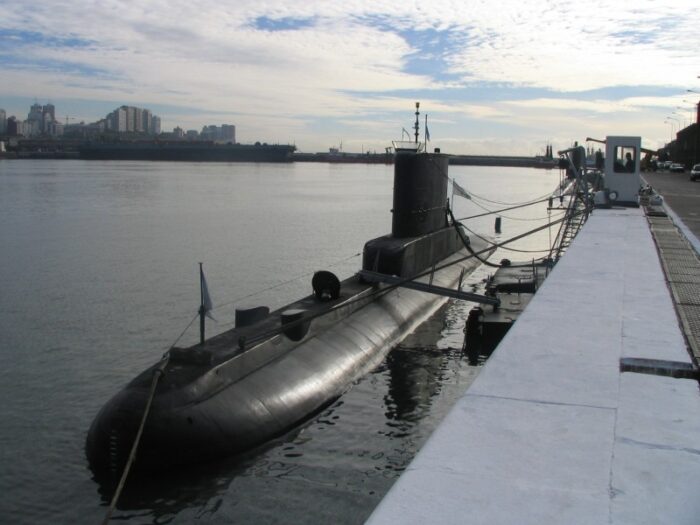
ARA Salta, today used as training platform at dockside
The second user was Argentina with two Type 209/1200, the Salta class in 1974: S-31 Salta and S-32 San Luis. During the Falklands War (1982), ARA San Luis was in war patrol when her fire control computer went out of order but she managed to reach her designated area, located the British Task Force managed and fire at least 3 wire guided SST-4 mod0 torpedoes but none hit. One had its guide wire cut a minute after launch and the others ended off the assigned course. Testings later revealed their electric gyroscopes had reversed polarity due to a faulty assembly. They had to be completely refitted plus a conversion of part of the stock from Mod0 to Mod1 at AEG. However it should underline the stealthiness of the Type 209 as despite the ASW escort, San Luis arrived in fire position undetected.
ARA Salta (S-31) had midlife upgrades 1988-1995 and 2004-2005 but from 2021 used for dock side training whereas ARA San Luis was stricken in 1997 after incomplete overhaul.
The Argentine Navy was still overall satisfied with the type and later ordered two TR-1700-class (Santa Cruz class) commissioned between 1984 and 1985. These had nothing to do with the Type 209 and were 2,260t models (largest in Germany since WW2) manufactured by Thyssen Nordseewerke and tailored in such a way the whole class of 6 could be built in Argentina at Astillero Domecq Garcia. However the construction was suspended between 15-70% complete and the four incomplete boats scrapped for parts.
 Brazil Tupi class (1 class, 4 boats)
Brazil Tupi class (1 class, 4 boats)
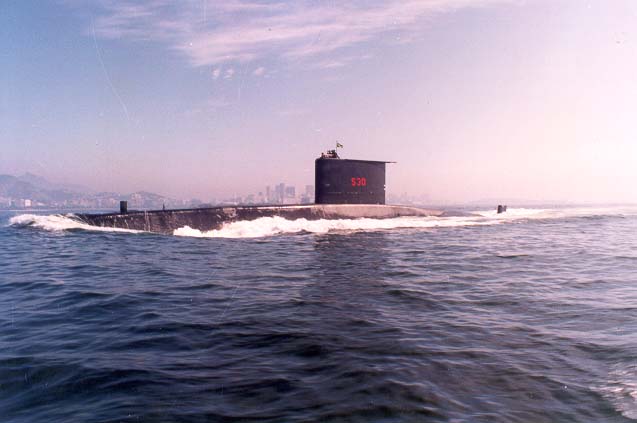
Brazil kept its GUPPY far longer than many other countries, and only jumped in the Tyoe 209 bandwagon late in 1898 with the four boats of the Tupi class, 209-1400 type.
The Tupi class S-30-34 comprised Tupi (1989) Tamoio (1994), Timbira (1996), Tapajó (1999) and Tikuna of the 1400mod with AIP (2005). The first was built at HDW and with tech transfer, the rest at Arsenal de Marinha do Rio de Janeiro. More recently, Brazil opeted for the same approach with the Scorpene class. Indeed its S-BR variant CM-2000 is stretched to 70.62 meters for long oceanic cruises, a complete departure for the coastal Type 209. They had a new combat systems capable of using the Mk.48 torpedo. Tikuna (S-34) was a modified Type 209/1400 but mod of Tapuia (S-35) was cancelled. As of 15 September 2023, Tupi (S-30) and Tikuna (S-34) remains active.
 Chile: Thomson class (1984)
Chile: Thomson class (1984)
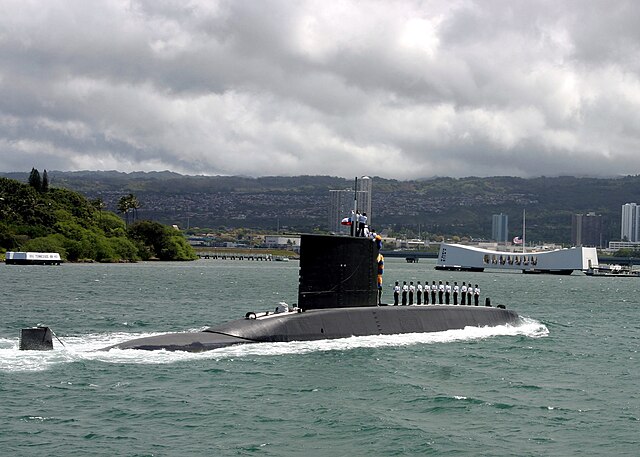
Simpson entering Pearl Harbor 2004
In 1882 Chile followed Argentina and purchase to replace its old GUPPY III boats of the same name by two 1400L, SS-20 Thomson (1984) and SS-21 Simpson. Still active. They are completed by two larger Oberon class boats, the O’Brien class. Thomson (SS-20) had a refit and upgrade completed in early 2009, with the SUBTICS combat management system and BlackShark torpedoes.
 Colombia: Pijao Class (1975)
Colombia: Pijao Class (1975)
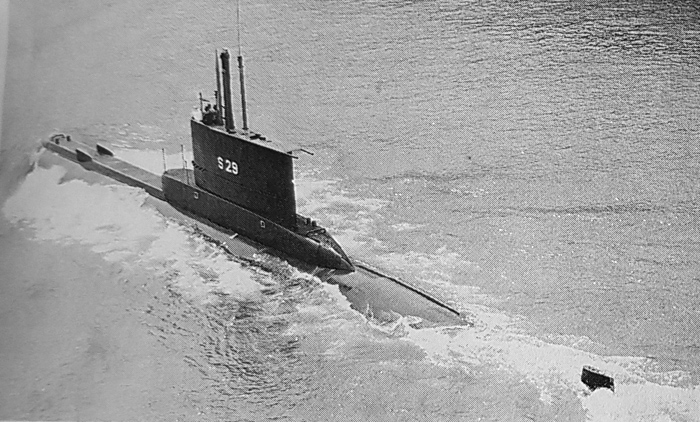
The Pijao class were two 1200 types, S-28 Pijao and S-29 Tayrona commissioned in 1975. They were in essence the first submarines of the Peruvian navy and a considerable setup in naval deterrence. Both active today, upgraded between 2009 and 2011 in the state-owned shipyard COTECMAR, with the assistance of HDW.
 Ecuador: Shyri class (1977)
Ecuador: Shyri class (1977)
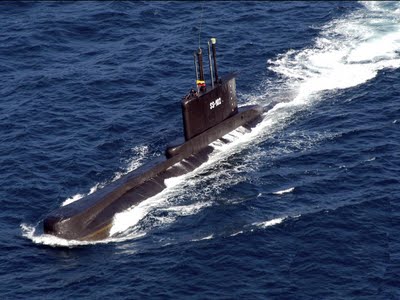
Same story here, these were the first submarines of the Ecuadorian Navy ever. The Shyri class were 209-1300 types. The class comprised S101 Shyri (1977) and S102 Huancavilca (1978).
Shyri (S101) was modernized at ASMAR in 2009–2012 and slightly damaged after the tsunami in Talcahuano. Huancavilca (S102) was modernized in ASMAR fom November 15, 2011 until 2014.
 Egypt: S41 class (2017)
Egypt: S41 class (2017)
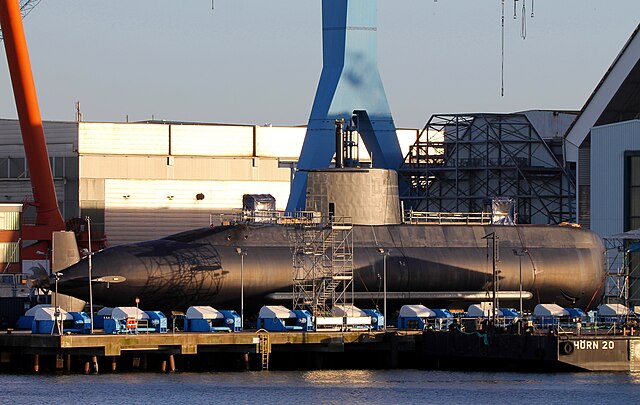
The first in class in completion at Kiel by HDW
Type 209/1400mod-class submarines: S41 (861), S42 (864), S43 (867), S44 (870). Acquired 2017, 2020-21. Operates the SeaHake mod 4 torpedoes & UGM-84L Harpoon Block II.
 Greece: Glafkos and Poseidon class
Greece: Glafkos and Poseidon class
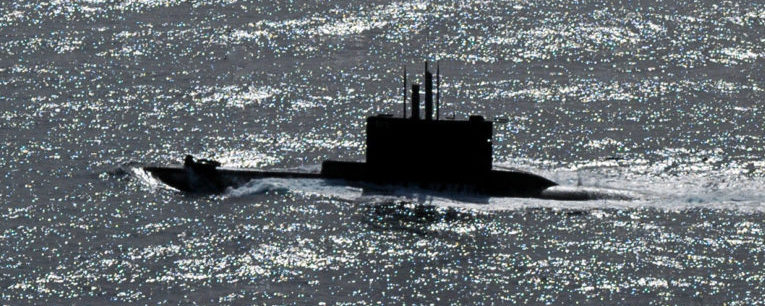
HS Proteus (S 113) off Sicily during a NATO Exercise
The first confirmed user was Greece’s Hellenic Navy which commissioned four Type 209/1100s (Glafkos class) between 1971 and 1972:
S-110 Glavkos, S-111 Nirefs, S-112 Triton and S-113 Protefs. Three decommissioned in 2011, the last in 2022.
Next Greece adopted four Type 209/1200s (Poseidon class) in 1979: S-116 Poseidon, S-117 Amfitriti, S-118 Okeanos and S-119 Pontos. Okeanos was converted as an AIP variant.
Greece is replacing its aging Glavkos class with four Type 214 submarines (Papanikolis class).
The Glavkos class overhauled under the Neptune I program 1993-2000.
The Poseidon-class saw the Neptune II program cancelled, aprt for Okeanos (S118). Glavkos (S-110) was decommissioned on 9 June 2011 and Protefs (S-113) on 16 May 2022, planned to be preserved as a museum.
 India: Shishumar class (1986)
India: Shishumar class (1986)

The class comprised four Type 1500 boats (the only ones), S44-47 Shishumar and Shankush of 1986, Shalki (1992) and Shankul (1994). The first two built at Howaldtswerke-Deutsche Werft and the last two at Mazagon Dock Limited after a tech transfer. Largest and most capable Type 209 ever, their electronic suite comprises a German Atlas Elektronik CSU 83 sonar, French Thomson Sintra DUUX-5 and Thomson-CSF Calypso surface search radar, the Argo Phoenix II AR 700 or Kollmorgen Sea Sentry and C 303 acoustic decoys for defence. They are armed with 14 × AEG-SUT Mod-1 torpedoes, 24 × external strap-on mines and a number of UGM-84L Harpoon Block II missiles only on the last pair.
Option for two more was not followed up aft several reviews. They are all equipped with integrated escape sphere for full crew and had midlife refits 1999-2005, and negociations with HDW for additional upgrades were abandoned when it was decided to op-in for the Scorpene class.
 Indonesia: Cakra, Nagapasa classes (1981-2017)
Indonesia: Cakra, Nagapasa classes (1981-2017)
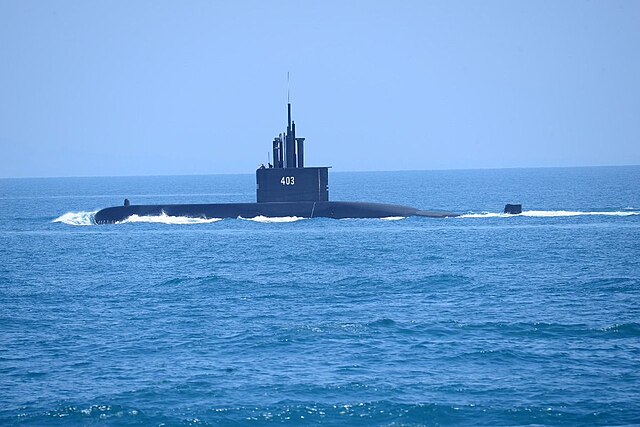
In 1979, Indonesia’s first submarine force comprised second-hand Whiskey class boats in a poor state after years of absent maintenance. Thus the country in its post-Sukharno new naval program managed to purchased tow Type 209-1300 first in 1981, the Cackra class (402 Cakra, 403 Nangala), both active today.
Indonesia purchased in 2015 three Type 1400 actually built in Korea (Jang Bogo class), the Nagasapa class: 403 Nagapasa (com. 2017), Ardadedali (2018) and Alugoro (2021) among the last Type 209 ever built.
The later have the Kongsberg MSI-90U Mk 2 combat management system, Atlas Elektronik CSU-90 active and passive sonar, ELAC KaleidoScope sonar suite Flank sonar arrays, Pegasso RESM system, Aries radar, ECPINS-W integrating navigation and tactical systems, L3’s MAPPS integrated platform management system, Safran’s Sigma 40XP inertial navigation systems, Hensoldt SERO 400 & OMS 100 periscope, ZOKA acoustic torpedo countermeasures and a torpedo only armament, composed of Italian Black Shark heavyweight models.
KRI Cakra was refitted by Daewoo in 2004-2006, Nanggala 2009-2012. KRI Nanggala was sunk on 21 April 2021. She went missing in a routine exercise in the Bali Sea under command of Colonel Harry Setyawan, with 49 crewmembers and 3 weapon specialists on board. The enquiry concluded of poor maintenance pratices and corruption at the yard; The root cause is presumed to be a power outage.
 Peru: Islay and Angamos classes (1975-1980)
Peru: Islay and Angamos classes (1975-1980)
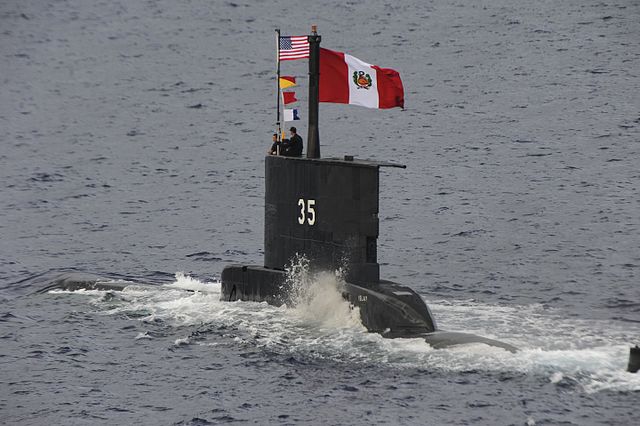
Peru was the second to purchase the Type 1100 after Greece. The Islay class comprised SS-35 Islay and SS-36 Arica commissioned in 1975. They are powered by 4 MTU Type 12V493 AZ80 GA31L diesel engines and a Siemens electric motor and carry SST-4 torpedoes. Still active.
The next purchase in the 1980s was for the Type 209/1200 Angamos class: BAP Angamos (1980), Antofagasta (1980), Pisagua (1982), Chipana (1983) SS-31-34. Some were renamed, from Casma, Blume and Pisagua. Powered by the 4 MTU Type 12V493 AZ80 GA31L and carrying the same SST-4 torpedoes. The EW suite comprises the Calypso radar, CSU-3Z sonar suite, PRS-3/4 sonar, ECM suite, and SINBAD M8 CCS.
 South Africa: Heroine class (2005)
South Africa: Heroine class (2005)
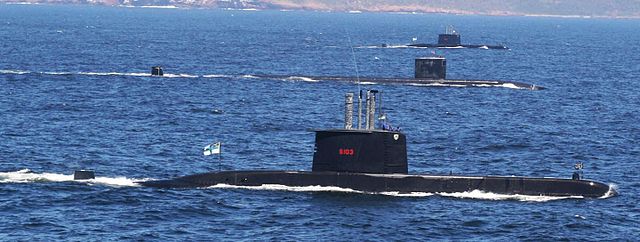
Three 1400mod: S101 Manthatisi (2005), S102 Charlotte Maxeke (2007) and S103 Queen Modjadji (2008). Rhey were intended to replace the Daphne class submarines. EW suite comprises the STN Atlas CSU-90; hull mounted and flank arrays, an unknown Surface search I-band radar and a Zeiss non-hull penetrating optronic mast, Grintek Avitronics RSM, intercept + radar warning receiver ELINT Saab S/UME-100 tactical electronic support measures. They are armed with AEG SUT 264 torpedoes with optional UGM-84 Harpoon integration. Active.
 South Korea: Jang Bogo class (1993)
South Korea: Jang Bogo class (1993)

The nine Jang Bogo-class submarine or KSS-I (Korean Submarine-I) were made under licence as a variant of the Type 209-1200 diesel-electric attack submarine. Later a Daewoo (DSME) upgraded model were exported to Indonesia in 2012 and is maerketed to Thailand as well. They are powered still by German 4 MTU Type 8V396 SE diesels, carries SUT torpedoes and optional UGM-84 Harpoons.
The Electronic suite comprises the locally developed Torpedo Acoustic Counter Measures (TACM), Scant radar, CSU-83 sonar suite, PRS-3/15 sonar, Argo AR-700 ECM suite, and ISUS 83 CCS.
They armed with SUT Mod.2, Sub-Harpoon SSM (4 UGM-84C instead of 4 torpedoes), SUT Mod.2 or 28 mines for the latter boats.
Class:
Only 061 was built at HDW, all the rest at Okpo Daewoo yard: Chang Bogo, Lee Chun, Choi Muson, Park Wi, Lee Jongmu, Jung Woon, Lee Sunsin, Na Daeyong, Lee Eokgi 061-071 1993-2001, all active.
There will be a dedicated post on them in the future.
 Turkey (classes Atılay, Preveze, Gür: 14 boats)
Turkey (classes Atılay, Preveze, Gür: 14 boats)

Soon after Greece moved in, Turkey replicated by purchasing no less than six submarines, of the Atılay class (com. 1976-89), 209-1200 type: S-347 to 352 Atılay, Saldıray, Batıray, Yıldıray, Doğanay, Dolunay. The first 3 built by HDW, the last three at Gölçuk NSY, Kocaeli in Izmir, providing useful experience.
Next was the Preveze class partly built in Turkey as the Type 1400.T1 S-353-356 Preveze, Sakarya, Mart, Anafartalar in 1994-1999.
And finally the Gür class, Type 1400.T2 S-357-360 Gür; Çanakkale, Burakreis, Birinci İnönü 2003-07 and Turkey will be replacing early Atılay-class ships with six Type 214 submarines. The T1 and T2 are original enough for a dedicated post in the future.
As for the Atılay class, tyey were powered by four MTU 12V493 AZ80 diesel-generators, and armed with SUT, SST-4, and Mk 37 Mod.2 torpedoes.
The EW suite comprised the Calypso-II radar, CSU-3 sonar suite (AN526, AN402AS, DUUX-2 sonars), DR-2000 ECM suite, M8 CCS, and later the Porpoise ECM suite, SINBADS CCS.
 Venezuela: Sábalo class (1976)
Venezuela: Sábalo class (1976)

Last and only submarines of the Bolivarian Navy of Venezuela, these were two 209-1300 ordered in 1975, S-31 Sabalo commissioned in 1976 and S-32 Caribe in 1977.
Previous classes were the sole picua (1951) a GUPPY II, and the two Caite class (same).
The Sabalo class were powered by four MTU 12V493 TB90 diesel-generators coupled with a 1 Siemens electric motor. They were armed with Mk 37 mod.2 and SST-4 topredoes. The electric suite comprised
a Calypso radar, CSU-3-32, DUUX-2 sonars, DR-2000 ECM suite, Mk 8 mod.24 CCS.
The status of both boats unclear as of 2020.
Sources/Read More
Conway’s all the world’s fighting ships 1947-95
Siegfried Breyer, Gerhard Koop: Die Schiffe und Fahrzeuge der deutschen Bundesmarine 1956–1976. München 1978
Johannes Ewerth: Die U-Flottille der deutschen Marine. Herford 1988
Heinrich Schütz: Nur Vergangenheit oder schon Geschichte? – Die Stahlkrise im deutschen U-Boot-Bau. Marineforum
Karr, Hans (2014). Deutsche Uboote seit 1956 (in German). Stuttgart: Motorbuch
Lutz Nohse, Eberhard Rössler, Moderne Küsten-Uboote, München 1972
Links
globalsecurity.org
intel report on fidelispark.tripod.com/
on militaryfactory.com
de.wikipedia.org Klasse 209
navweaps.com cold war German Torpedoes
weaponsystems.net DM2 Seeaal
de.wikipedia.org/wiki/Klasse_209
globalsecurity.org/
thyssenkrupp-marinesystems.com class-209
shephardmedia.com/ ageing-type-209-submarine/
navalnews.com/ egypt type-209-submarine/
naval-technology.com/ egyptian-navy fourth-type-209-1400mod
apps.dtic.mil/ pdf
nationalinterest.org/
On Ytube
Videos
Life onboard a Chang Bogo class
Model Kits
All kits on scalemates: 1:300; 350 and 700 scale.
3D
https://free3d.com/3d-model/type-209-submarine-988.html



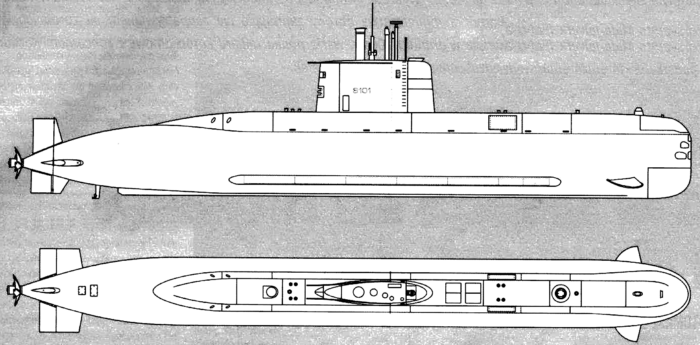
 Latest Facebook Entry -
Latest Facebook Entry -  X(Tweeter) Naval Encyclopedia's deck archive
X(Tweeter) Naval Encyclopedia's deck archive Instagram (@navalencyc)
Instagram (@navalencyc)





 French Navy
French Navy Royal Navy
Royal Navy Russian Navy
Russian Navy Armada Espanola
Armada Espanola Austrian Navy
Austrian Navy K.u.K. Kriegsmarine
K.u.K. Kriegsmarine Dansk Marine
Dansk Marine Nautiko Hellenon
Nautiko Hellenon Koninklije Marine 1870
Koninklije Marine 1870 Marinha do Brasil
Marinha do Brasil Osmanlı Donanması
Osmanlı Donanması Marina Do Peru
Marina Do Peru Marinha do Portugal
Marinha do Portugal Regia Marina 1870
Regia Marina 1870 Nihhon Kaigun 1870
Nihhon Kaigun 1870 Preußische Marine 1870
Preußische Marine 1870 Russkiy Flot 1870
Russkiy Flot 1870 Svenska marinen
Svenska marinen Søværnet
Søværnet Union Navy
Union Navy Confederate Navy
Confederate Navy Armada de Argentina
Armada de Argentina Imperial Chinese Navy
Imperial Chinese Navy Marinha do Portugal
Marinha do Portugal Mexico
Mexico Kaiserliche Marine
Kaiserliche Marine 1898 US Navy
1898 US Navy Sovietskiy Flot
Sovietskiy Flot Royal Canadian Navy
Royal Canadian Navy Royal Australian Navy
Royal Australian Navy RNZN Fleet
RNZN Fleet Chinese Navy 1937
Chinese Navy 1937 Kriegsmarine
Kriegsmarine Chilean Navy
Chilean Navy Danish Navy
Danish Navy Finnish Navy
Finnish Navy Hellenic Navy
Hellenic Navy Polish Navy
Polish Navy Romanian Navy
Romanian Navy Turkish Navy
Turkish Navy Royal Yugoslav Navy
Royal Yugoslav Navy Royal Thai Navy
Royal Thai Navy Minor Navies
Minor Navies Albania
Albania Austria
Austria Belgium
Belgium Columbia
Columbia Costa Rica
Costa Rica Cuba
Cuba Czechoslovakia
Czechoslovakia Dominican Republic
Dominican Republic Haiti
Haiti Hungary
Hungary Honduras
Honduras Estonia
Estonia Iceland
Iceland Eire
Eire Equador
Equador Iran
Iran Iraq
Iraq Latvia
Latvia Liberia
Liberia Lithuania
Lithuania Mandchukuo
Mandchukuo Morocco
Morocco Nicaragua
Nicaragua Persia
Persia San Salvador
San Salvador Sarawak
Sarawak Uruguay
Uruguay Venezuela
Venezuela Zanzibar
Zanzibar Warsaw Pact Navies
Warsaw Pact Navies Bulgaria
Bulgaria Hungary
Hungary

 Bundesmarine
Bundesmarine Dutch Navy
Dutch Navy Hellenic Navy
Hellenic Navy Marina Militare
Marina Militare Yugoslav Navy
Yugoslav Navy Chinese Navy
Chinese Navy Indian Navy
Indian Navy Indonesian Navy
Indonesian Navy JMSDF
JMSDF North Korean Navy
North Korean Navy Pakistani Navy
Pakistani Navy Philippines Navy
Philippines Navy ROKN
ROKN Rep. of Singapore Navy
Rep. of Singapore Navy Taiwanese Navy
Taiwanese Navy IDF Navy
IDF Navy Saudi Navy
Saudi Navy Royal New Zealand Navy
Royal New Zealand Navy Egyptian Navy
Egyptian Navy South African Navy
South African Navy






























 Ukrainian Navy
Ukrainian Navy dbodesign
dbodesign